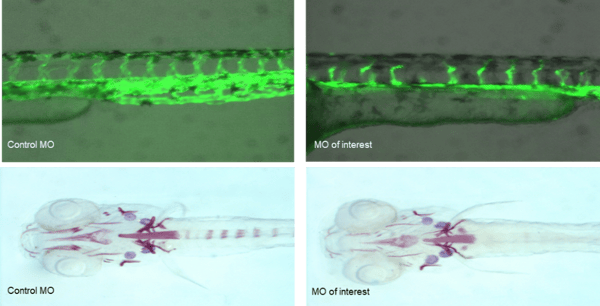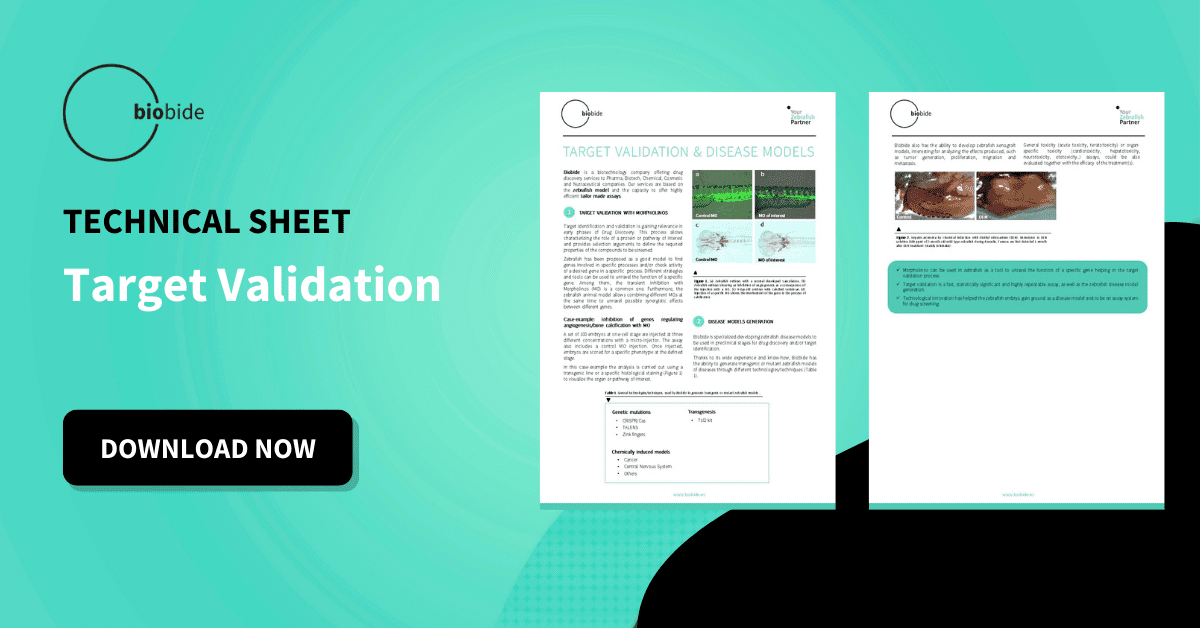One important strategy used during drug discovery and development is the modification of the expression of a particular gene in an animal model. This usually allows researchers to identify and characterize genes involved in important cellular processes. This aim can be achieved using several molecular biology techniques including the use of morpholinos (MO). Morpholinos are easy to produce and store, which makes them very cost-effective compared to other methods of gene silencing.
What is a Morpholino?
Morpholinos are short synthetic antisense oligonucleotides that recognize and bind short sequences (between 18 and 25 nucleotides) either at the initiation site of the messenger RNA (mRNA) or at specific splice junctions. They are assembled upon a backbone of morpholine rings which contain any of the four genetic bases (adenine, guanine, cytosine, and thymine). This way, they are very similar to DNA, with the difference that they have these morpholine rings instead of the sugar groups found in the DNA. This simple conversion not only increases morpholino stability within the cells but also lowers their production costs.
How does a Morpholino work?
A gene is made up of a long chain of DNA, in which exons and introns are distinguished. The exons are the coding regions that will provide the information for the synthesis of a protein, while the introns are non-coding regions, which are interspersed in the gene. The exon sequences of DNA are transcribed to form mRNA. The RNA chain will give rise to the formation of a chain of amino acids, in other words, a protein.
If we block and neutralize the sequence of a particular mRNA, these antisense oligonucleotides will eventually knock down that gene expression. Silencing a gene is a method of learning about the function of a particular protein, allowing researchers to characterize pathological molecular pathways and create models that target specific diseases.
But antisense oligonucleotides can also be used as gene therapy to correct the transcription of an abnormal protein. The aim of this antisense therapy is to try to block a particular mutation occurring in important therapeutic areas such as metabolic diseases, infectious diseases, or cancer.
Morpholino and Zebrafish
Antisense morpholinos have been applied to studies in various model organisms including zebrafish, mice, chickens, frogs, and sea urchins.
When planning an experiment using morpholinos, there are a few important considerations to keep in mind including features such as high efficacy, high specificity, and low cost.
Zebrafish is a very advantageous vertebrate model that complies with the 3Rs policy (Replacement, Reduction, and Refinement). Besides, when the small larvae are under five days post-fertilization, most organs of these fish are fully developed and yet not considered an in vivo assay under European Directive 2010/63/EU. Zebrafish have also many other attributes that make this model very attractive in preclinical research including its transparency, their quick and prolific availability, the high genetic homology with human diseases (over 85%), and their cost-efficiency. Due to these characteristics, this alternative animal model is very convenient for morpholino experimental designs in drug discovery and development.
At Biobide we soon realized these advantages and became pioneers at using this technique. Typically, we cover our customer´s necessities by designing the desired morpholinos and their experimental controls obtaining their subsequent chemical synthesis. Then these morpholinos are injected into the yolk or cell cytoplasm of our zebrafish embryos at early developmental stages (typically at a one-cell stage but could be up to four cells). Depending on the gene targeted and final conditions required, the time frame for these experimental assays could be up to a few weeks.
The silencing of genes involved in vasculature formation and bone calcification is shown in the next examples. The top picture depicts a zebrafish control embryo with a normal developed vasculature (shown with GFP fluorescence) versus a zebrafish embryo showing inhibition of angiogenesis as a consequence of the injection with a Morpholino (MO). The bottom picture shows the calcified vertebrae of a 9-day old embryo (control) and the lack of calcification after the injection of a morpholino blocking a gene involved in the process of calcification.

Overall, at Biobide we are proud to offer a straightforward assay with high repeatability, highly statistical significance, fast, and cost-effective, contributing to adding value to numerous research projects in early Drug discovery and development.





